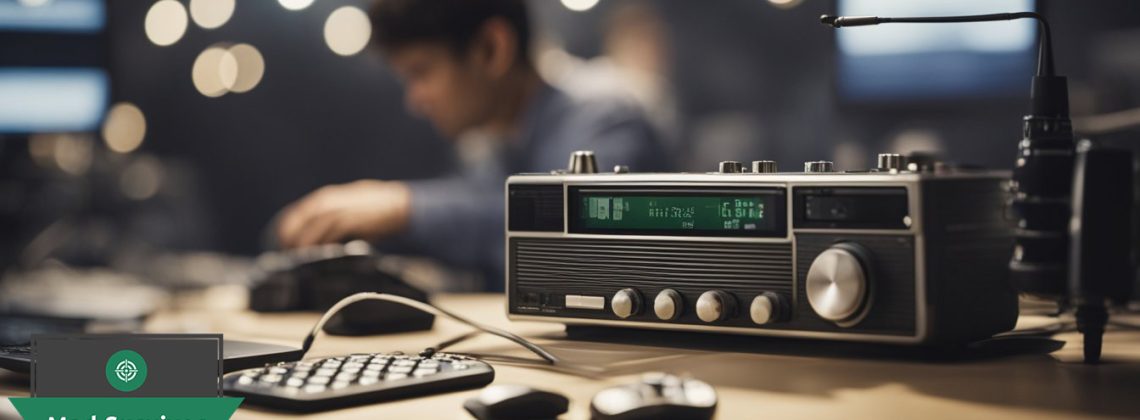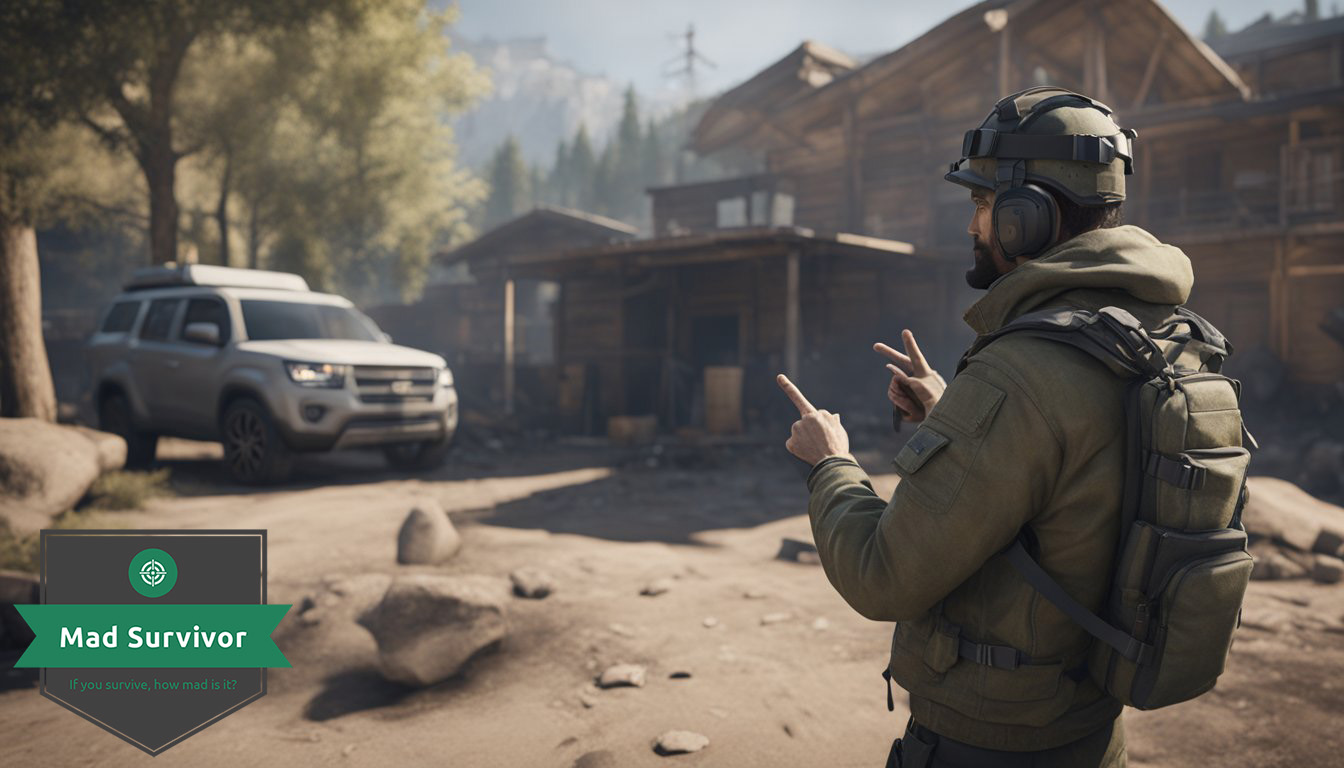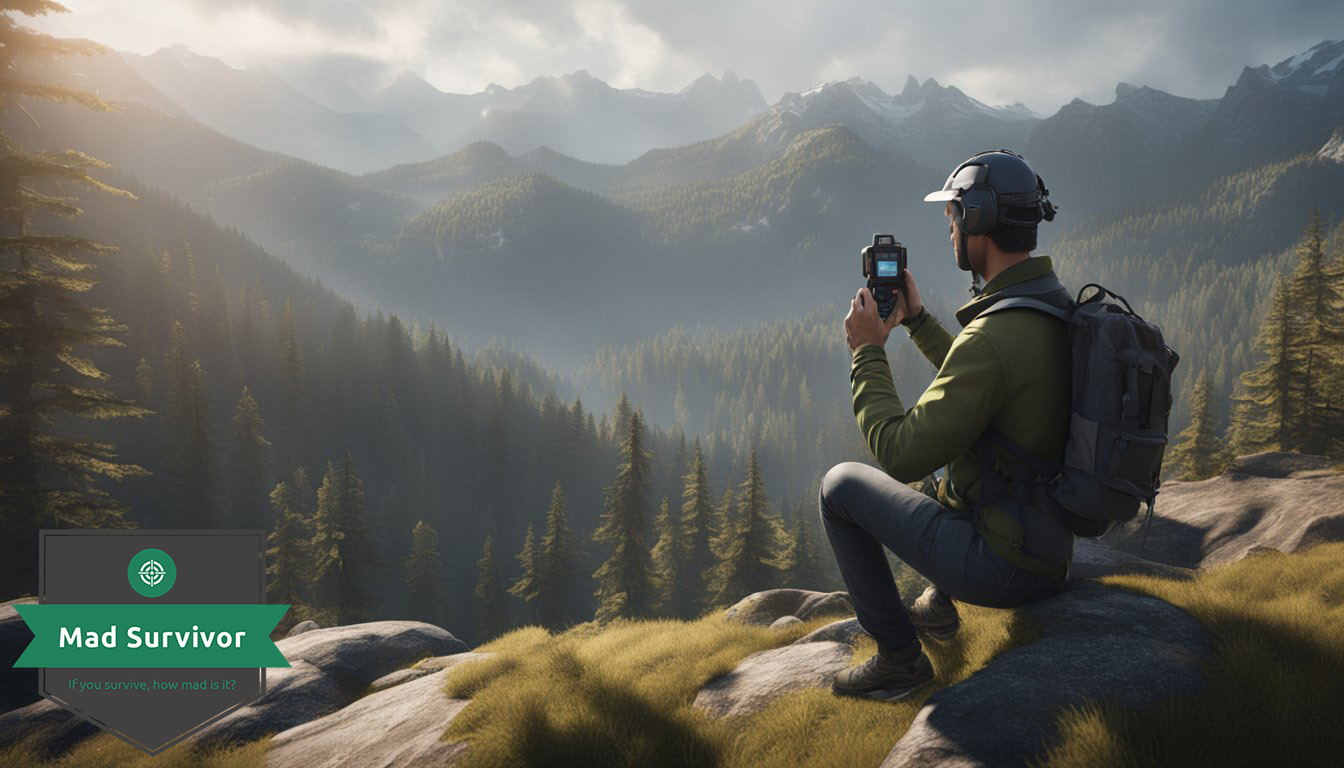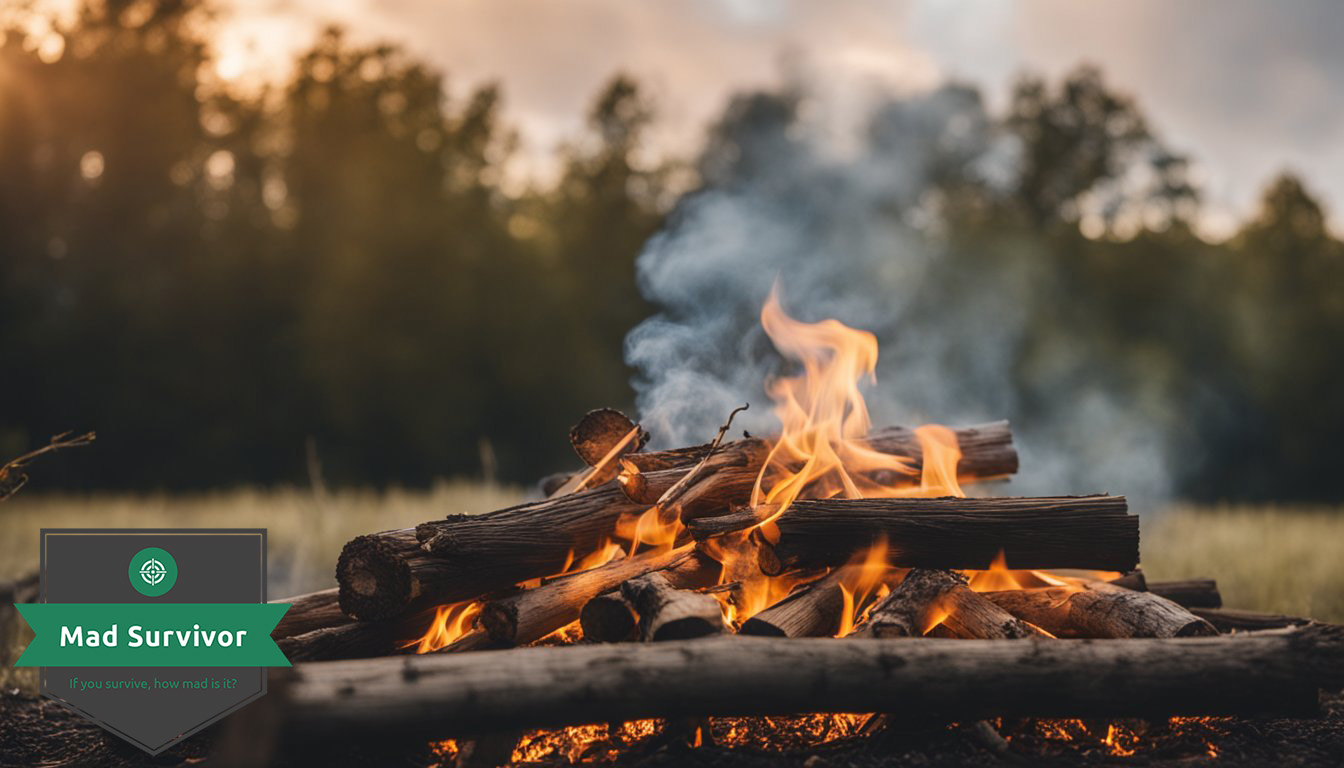
In a survival situation, communication can mean the difference between life and death. Whether you’re stranded in the wilderness, lost in a city, or facing a natural disaster, being able to communicate effectively can help you get the help you need and keep you safe. However, survival communication is not always easy. You may be dealing with limited resources, unfamiliar equipment, and high-stress situations that can make it difficult to get your message across.
Understanding how to communicate in a survival situation is essential for anyone who spends time outdoors or wants to be prepared for emergencies. This article will cover the basics of survival communication, including how to prepare for emergencies, what equipment you need, and techniques for getting your message across. We’ll also cover some of the challenges you may face in a survival situation and how to overcome them. By the end of this article, you’ll have a better understanding of how to communicate effectively in a variety of survival situations.
Key Takeaways
- Understanding survival communication is essential for anyone who wants to be prepared for emergencies.
- Preparation and equipment are key to effective survival communication.
- Techniques such as using radios and establishing communication protocols can help you stay safe in a survival situation.
Understanding Survival Communication

When it comes to survival situations, effective communication is crucial. In these situations, communication can mean the difference between life and death. Understanding the different types of survival situations and the importance of effective communication can help you prepare for the worst.
Types of Survival Situations
Survival situations can vary greatly, from being lost in the wilderness to being trapped in a building during a natural disaster. Each situation presents its own unique challenges when it comes to communication.
In wilderness survival situations, communication may be limited due to the lack of cell service or other forms of technology. In these situations, it’s important to have alternative communication methods, such as signaling with a whistle or mirror.
In urban survival situations, communication may be hindered by the chaos and noise of the environment. It’s important to have a plan in place for how to communicate with others in these situations, such as using hand signals or designated meeting places.
Importance of Effective Communication
Effective communication is essential in any survival situation. It allows you to coordinate with others, share important information, and call for help if necessary.
In emergency situations, it’s important to use clear and concise language to convey your message. Avoid using jargon or technical terms that others may not understand.
It’s also important to listen actively to others and ask clarifying questions if necessary. Miscommunication can be dangerous in survival situations, so taking the time to ensure everyone is on the same page can prevent mistakes and save lives.
Preparation and Equipment

When it comes to communicating in a survival situation, preparation and having the right equipment is crucial. In this section, we will discuss two key aspects of preparation and equipment: Choosing the Right Gear and Maintaining Your Equipment.
Choosing the Right Gear
The first step in preparing for communication in a survival situation is to choose the right gear. There are a few key pieces of equipment that you should consider having in your survival kit:
- Battery-powered Amateur (ham) radio: A ham radio is a great option for communicating in a survival situation. It allows you to communicate with other ham radio operators and can transmit over long distances. Make sure to pack extra batteries to ensure you can power your radio for an extended period of time.
- Emergency FM radio: An emergency FM radio is another important piece of equipment to have in your survival kit. It can help you stay up-to-date on weather conditions and emergency alerts. Look for a radio that is battery-powered and has a built-in flashlight for added convenience.
Maintaining Your Equipment
Once you have chosen the right gear, it is important to maintain it properly. Here are a few tips to keep your equipment in good working order:
- Check your batteries regularly: Make sure to check your batteries regularly and replace them as needed. It is a good idea to pack extra batteries in your survival kit to ensure you have a backup supply.
- Store your equipment properly: When not in use, make sure to store your equipment in a dry, cool place. This will help prevent damage from moisture or extreme temperatures.
Communication Techniques

When it comes to communicating in a survival situation, there are three main techniques that you can use: visual signals, audible signals, and radio communication basics. Each of these techniques has its own advantages and disadvantages, so it’s important to know when and how to use them.
Visual Signals
Visual signals are a great way to communicate over short distances. They are easy to see and can be used even when there is no power or communication equipment available. Some common visual signals that you can use include:
- Smoke signals: Start a fire and create smoke to signal for help. You can use different patterns of smoke to convey different messages.
- Flares: Flares are bright, colorful, and can be seen from a distance. They are commonly used by boaters and hikers to signal for help.
- Mirrors: Use a mirror to reflect sunlight and create flashes of light that can be seen from a distance.
Audible Signals
Audible signals are a great way to communicate over longer distances. They can be heard even in noisy environments and can be used to attract attention or signal for help. Some common audible signals that you can use include:
- Whistles: A loud whistle can be heard from a distance and can be used to attract attention or signal for help.
- Horns: Air horns and other loud horns can be heard over long distances and can be used to signal for help.
- Shouting: Yelling or shouting can be used to attract attention, but it is not as effective as other audible signals.
Radio Communication Basics
Radio communication is one of the most effective ways to communicate in a survival situation. It allows you to communicate over long distances and can be used to send and receive important information. Some basic radio communication techniques that you should know include:
- Choosing the right frequency: Different frequencies are used for different types of communication. Make sure you choose the right frequency for your needs.
- Using the right equipment: Make sure you have the right radio equipment for your needs. This includes choosing the right type of radio and making sure it is fully charged.
- Following proper radio etiquette: When using a radio, it is important to follow proper etiquette. This includes identifying yourself, speaking clearly and concisely, and waiting for a response before speaking again.
Using Radios for Survival

When it comes to communicating in a survival situation, radios can be an extremely useful tool. They can help you stay in touch with others, gather information, and call for help. Here are a few ways you can use radios for survival:
Amateur (Ham) Radio Operation
Amateur (ham) radio operation is a great way to communicate in a survival situation. These radios operate on a wide range of frequencies, allowing you to communicate with other ham radio operators in your area. They are also battery-powered, which means you can use them even if the power is out.
To use a ham radio, you will need to obtain a license from the Federal Communications Commission (FCC). This license will allow you to operate on specific frequencies and use certain types of equipment. Once you have your license, you can join a local ham radio club or network to stay in touch with other operators in your area.
FM Radio for Information
In addition to ham radios, FM radios can also be useful in a survival situation. Emergency FM radios are designed to receive broadcasts from local emergency services and government agencies. These broadcasts can provide you with important information about the situation, such as evacuation orders, weather updates, and road closures.
To use an FM radio, you will need to make sure it is battery-powered and has a built-in antenna. You should also keep spare batteries on hand in case the power goes out.
Survival Communication Protocols

When you find yourself in a survival situation, communication can be the key to your survival. It is important to have a communication plan in place before an emergency arises. This section will discuss two important aspects of survival communication protocols: creating a communication plan and emergency distress signals.
Creating a Communication Plan
A communication plan is a set of procedures that you and your group should follow in an emergency situation. It should include the following:
- A list of emergency contacts: Make sure to have a list of emergency contacts that includes family members, friends, and local authorities. Ensure that everyone in your group knows who to contact in case of an emergency.
- A communication schedule: Set up a communication schedule with your group. This will help ensure that everyone stays informed and up-to-date. For example, you could agree to check in with each other every hour or every day.
- Communication devices: Make sure that everyone in your group has a communication device. This could be a two-way radio, a satellite phone, or a whistle.
- A backup plan: Always have a backup plan in case your primary communication method fails. This could include using a different communication device or leaving a message in a designated location.
Emergency Distress Signals
In a survival situation, it is important to know how to signal for help. Here are some emergency distress signals that you should be familiar with:
- Three of anything: Three blasts of a whistle, three flashes of a light, or three shouts can indicate that you need help.
- S.O.S.: This is a universal distress signal that is recognized worldwide. It consists of three short signals, three long signals, and three short signals.
- Smoke signals: If you have a fire, create a large amount of smoke to signal for help.
- Mirrors: Use a mirror or other reflective object to flash sunlight in the direction of a potential rescuer.
Staying Informed During Emergencies

When you find yourself in a survival situation, staying informed is crucial. Knowing what’s happening around you can help you make informed decisions and increase your chances of survival. Here are some ways to stay informed during emergencies:
Monitoring News and Alerts
One of the best ways to stay informed during an emergency is to monitor news and alerts. Emergency FM radio is a great resource for this. Make sure to have a battery-powered or hand-crank radio in your survival kit. Tune in to the local emergency FM radio station to get updates on the situation. You can also check online for news and alerts from local authorities.
Information Sharing with Others
In a survival situation, it’s important to work together with others. One way to do this is by sharing information. If you have a radio or other means of communication, share updates with others in your group. This can help everyone stay informed and make better decisions. Remember to also listen to others and take their input into consideration.
Challenges and Solutions

Common Communication Barriers
When communicating in a survival situation, you may face several barriers that can hinder effective communication. The most common barriers include language barriers, environmental noise, and emotional stress.
To overcome language barriers, you can use nonverbal communication such as gestures and body language. Additionally, you can use basic phrases and words that are common across different languages.
Environmental noise can also be a problem when trying to communicate. To overcome this, you can find a quiet place or use hand signals. Using hand signals can help you convey basic messages without the need for verbal communication.
Emotional stress can also affect communication as it can cause panic and confusion. To overcome this, you should remain calm and focused. Take deep breaths and try to think clearly.
Overcoming Technical Difficulties
Technical difficulties can also hinder communication in a survival situation. If you are using electronic devices, you may face problems such as low battery or poor signal.
To overcome these problems, you should always carry spare batteries and a charger. Additionally, you can use alternative communication methods such as radio or satellite phones.
Conclusion

In a survival situation, effective communication can be the difference between life and death. Whether you are lost in the wilderness or facing a natural disaster, knowing how to communicate with others is crucial.
Remember to stay calm and clear when communicating with others. Use simple and concise language to convey your message. Avoid using jargon or technical terms that others may not understand.
If you have access to communication devices such as radios or cell phones, make sure to conserve battery life and use them only when necessary. Also, make sure to have a backup plan in case these devices fail.
Non-verbal communication can also be important in a survival situation. Use hand signals or visual cues to convey information to others. Make sure to establish a system beforehand so everyone knows what each signal means.
Lastly, don’t forget to listen to others. Communication is a two-way street, so make sure to actively listen and respond to what others are saying. By working together and effectively communicating, you can increase your chances of survival in any situation.

Leave a Reply